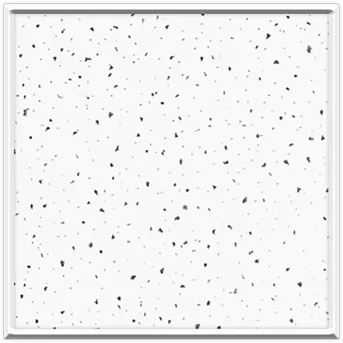8 月 . 20, 2024 16:31 Back to list
Installation Guide for Drywall Ceiling Grid Systems and Tips for Success
Understanding Drywall Ceiling Grid Systems
Drywall ceiling grid systems are essential components in modern interior construction, particularly in commercial and residential spaces. They serve multiple functions, from providing aesthetic appeal to improving acoustics and concealing essential utilities. This article delves into the structure, benefits, and installation processes associated with drywall ceiling grid systems, helping to elucidate their importance in contemporary architecture.
What is a Drywall Ceiling Grid?
A drywall ceiling grid is a framework made from metal or sometimes wood that supports drywall panels used as ceilings. This system can create a flat ceiling surface while also serving as a base for installing various types of ceiling materials, including tiles, panels, and finishes. The grid is typically composed of main runners, cross tees, and wall angles. The main runners run in one direction and are the backbone of the grid system, while the cross tees connect to the main runners, creating a ceiling grid layout into which drywall sheets are fitted.
Benefits of Using a Ceiling Grid System
The incorporation of drywall ceiling grids brings numerous advantages, including
1. Aesthetic Flexibility The ceiling grid allows for various finishes and designs, accommodating different architectural styles. Whether you prefer a modern look with concealed fixtures or a traditional appearance with intricate moldings, a ceiling grid can facilitate your vision.
2. Improved Acoustics Many drywall ceiling grid systems are designed to enhance soundproofing. By using specific types of drywall and grid materials, you can reduce noise transmission between rooms, making it an excellent choice for offices, classrooms, and recording studios.
3. Concealed Utilities In commercial buildings, numerous electrical wires, plumbing, and HVAC systems run above the ceiling. A ceiling grid allows for easy access to these utilities, ensuring they can be maintained without a complete overhaul of the ceiling structure.
4. Fire Safety Fire-resistant drywall is often used in conjunction with grid systems to provide extra safety measures. This setup can help slow down the spread of fire, a critical factor in building codes for commercial spaces.
5. Easy Installation and Maintenance One of the appealing aspects of drywall ceiling grids is their relatively straightforward installation process. Additionally, maintaining or replacing individual panels is much easier compared to traditional solid ceilings.
drywall ceiling grid

Installation Process
Installing a drywall ceiling grid requires careful planning and precise measurements. Here’s a brief overview of the installation process
1. Planning and Measurement Determine the desired height of the ceiling and measure the area accurately. Mark the positions for the wall angles first, ensuring they are level.
2. Installing Wall Angles Attach the wall angles around the perimeter of the ceiling area at the marked height.
3. Setting Main Runners Install the main runners, ensuring they are spaced appropriately, usually about four feet apart. Use a level to maintain horizontal alignment.
4. Adding Cross Tees Insert cross tees into the main runners, forming a grid system that can support drywall panels. The spacing will depend on the size of the drywall sheets being used.
5. Applying Drywall Panels Once the grid is securely in place, fasten the drywall panels to the grid, ensuring a tight fit.
6. Finishing Touches Finally, finish the edges with tape and compound, sanding them down for a smooth, professional look. Painting or texturing the surface will complete the aesthetic.
Conclusion
Drywall ceiling grids are a versatile solution for modern buildings, offering both functional and aesthetic benefits. Their ability to support various types of ceiling finishes, improve acoustics, conceal utilities, and provide ease of maintenance and installation makes them a popular choice among architects and builders alike. Understanding the fundamentals of drywall ceiling grid systems can pave the way for effective interior design and construction practices tailored to meet diverse requirements.
-
Revolutionizing Interior Design with Ceilings t grid Suspended SystemNewsOct.29,2024
-
Revolutionizing Ceiling Design with ceiling access panel with Gypsum Tile WaterproofNewsOct.29,2024
-
Revolutionizing Interior Design with PVC Gypsum Ceiling: A Comprehensive GuideNewsOct.29,2024
-
Elevating Interior Design with High quality Mineral Fiber Ceiling TilesNewsOct.29,2024
-
Revolutionizing Interior Design with PVC Gypsum Ceiling: A Comprehensive GuideNewsOct.29,2024
-
Elevating Interior Design with High-Quality Mineral Fiber Ceiling Tiles: A Comprehensive GuideNewsOct.29,2024







